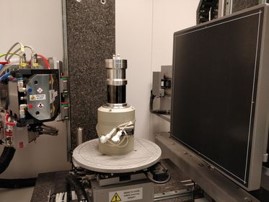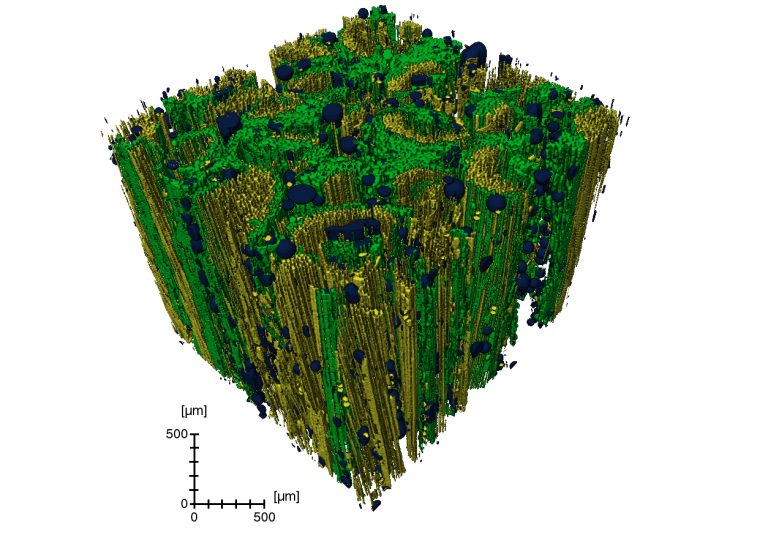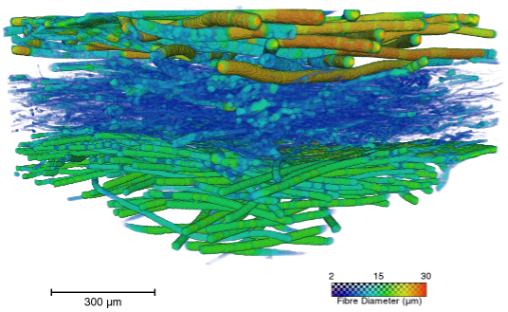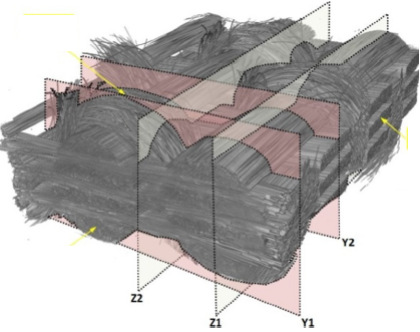
RL1 – Materials Engineering
X-ray Computed Tomography (XCT) analyses are an important part of our longstanding efforts to play a prominent role in materials science research. Examples are the new developments in biomaterials, composite materials and geopolymers and the concomitant quest for knowledge of damage growth in this new family of materials under loading, but also the evaluation of their environmental degradation or the search for the hierarchical structure of complex material systems. These activities also include the use of advanced image analysis techniques for the determination of global and local strains during in situ loading to study the mechanical behavior and failures of materials and to model this behavior.
- Bone substituting biomaterials.
- Composite materials: nano-engineered composites, hybrid composites and natural fibre composites.
- Resin matrix permeability of reinforcements.
- Geopolymers, hierarchical porosity and phase-changing components.
- Study of local strains during in situ loading and relation to mechanical behaviour and failure of materials.

Research Topics

4D XCT
In-situ stepwise and dynamic imaging Time-resolved imaging is a necessity in our research, as many processes we study under compression, tension, bending, imbibition, or during

Composites
XCT provides 3D information on the internal composite structure. The X-ray attenuation contrast between the fibres, matrix and voids allows segmentation, visualization and quantitative analysis

Community mask research
Respiratory viruses, like the coronavirus, spread between humans via direct contact, respiratory droplets and fine-particle aerosols (see figure below). Since the outbreak of the COVID-19

VoxTex
VoxTex is the software for the analysis of nano- or microfocus X-ray computed tomography images of fibrous materials and their transformation into finite element and computational

Micro-electronics (in collaboration with imec)
In the microelectronics industry, XCT is commonly used for failure analysis of chip packages and printed circuit bords (PCB). Imec (www.imec.be) investigates and develops innovative


